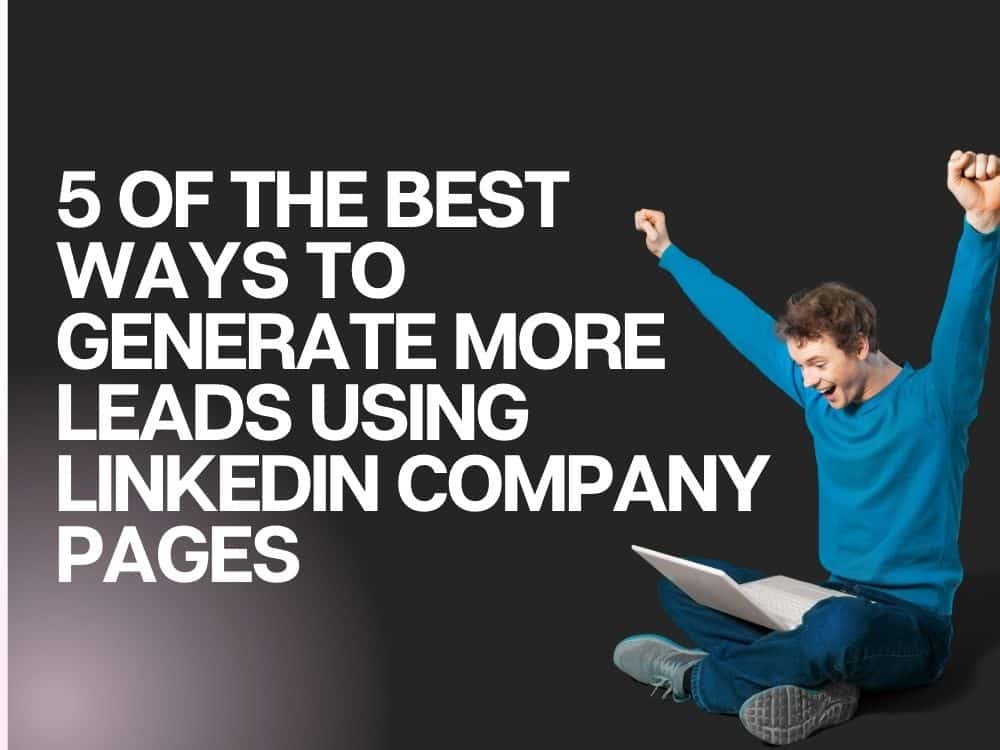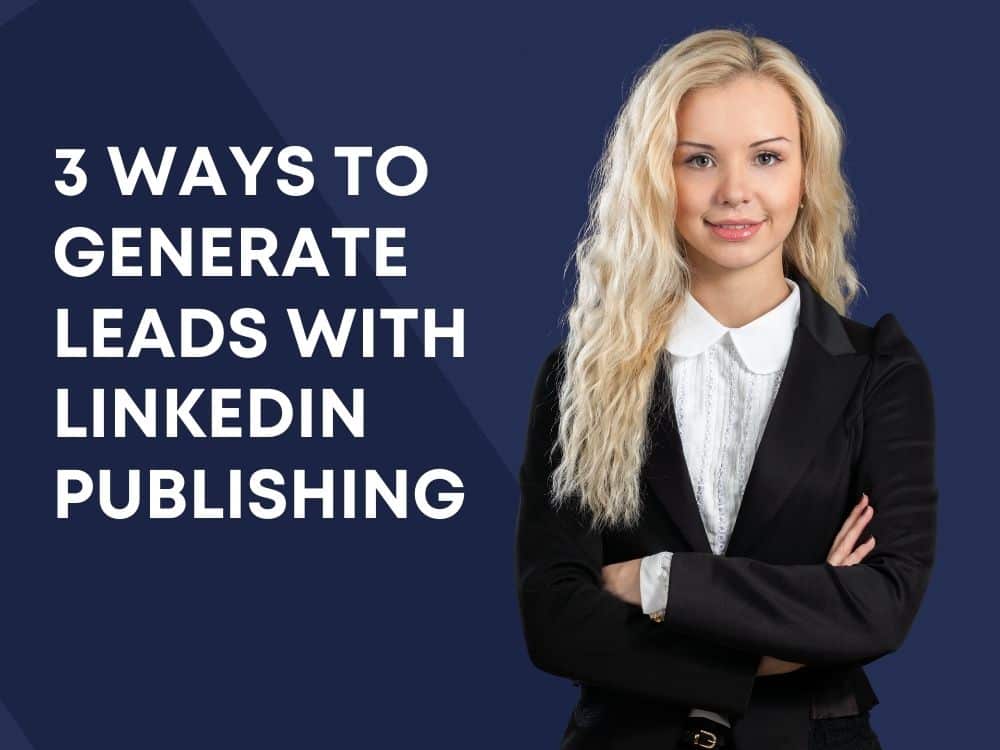Introduction
As a professional, you’re likely already aware of the immense potential LinkedIn offers for networking, career advancement, and showcasing expertise. But did you know that LinkedIn Publishing can also become one of your most powerful tools for lead generation? Whether you’re an entrepreneur, a marketer, or a consultant, LinkedIn’s content publishing platform allows you to position yourself as a thought leader, engage your audience, and attract quality leads.
In this article, we’ll dive into six strategies that will help you generate leads through LinkedIn Publishing. You’ll learn how to craft content that not only engages your audience but also guides them down the path toward becoming loyal clients or business partners. Ready to unlock LinkedIn’s full lead-generating potential? Let’s get started!
Table of Contents
1. Understanding LinkedIn Publishing for Lead Generation (H2)
Before diving into the strategies, it’s crucial to grasp how LinkedIn Publishing can work as a lead generation tool. While LinkedIn has always been a hub for professionals to network and connect, the Publishing platform allows you to create and share long-form content directly with your connections. This gives you the opportunity to showcase your expertise, share insights, and build trust with your audience.
Why LinkedIn for Lead Generation?
LinkedIn isn’t just another social media platform; it’s the top social network for professionals. According to LinkedIn’s own statistics, over 700 million users are active, and the platform continues to grow. More importantly, 61 million users are in senior decision-making roles. This makes LinkedIn an ideal place to target high-value business leads and professionals who are in the decision-making process.
By publishing content that resonates with your target audience, you can establish yourself as a thought leader and attract the right kind of attention, ultimately generating leads that are aligned with your business goals.
2. Building a Targeted Content Strategy (H2)
If you want to generate leads through LinkedIn Publishing, you need more than just good writing; you need a clear, well-thought-out content strategy. Creating valuable, relevant content that speaks directly to your audience’s pain points is key to success.
Know Your Audience
Before you begin writing, it’s essential to understand who you’re speaking to. Are you targeting small business owners? Corporate decision-makers? Or perhaps professionals in a particular industry or niche? The more specific you can be about your audience, the more effective your content will be.
Here’s how you can define your target audience:
- Conduct market research to understand their challenges, goals, and interests.
- Use LinkedIn search tools to find out what type of content is resonating with your audience.
- Check out your competitors’ content to see which topics are engaging their followers.
Craft Value-Driven Content
Once you have a clear picture of your audience, it’s time to start creating content. Your posts should:
- Address problems or questions your audience is facing.
- Provide actionable advice that they can apply to their own businesses or careers.
- Include industry trends, case studies, and practical insights to help establish your expertise.
The key is to write content that’s not just informative but also deeply valuable. By offering real solutions to your audience’s challenges, you create a strong incentive for readers to engage with your content and, ultimately, convert into leads.
3. Crafting High-Impact Articles (H2)
Now that you have a targeted content strategy, the next step is writing high-impact articles that will get noticed. LinkedIn’s Publishing platform allows you to post long-form articles directly to your profile, giving you the opportunity to share your insights in-depth and position yourself as an authority in your field.
Structure Your Article for Maximum Engagement
Effective LinkedIn articles are well-structured and easy to navigate. Here’s how you can ensure your articles stand out:
- Catchy Headline: Your headline is the first thing readers will see, so make it attention-grabbing. Use powerful, action-oriented words to compel the reader to click.
- Engaging Introduction: The first 100 words should hook the reader and make them want to continue reading. Start with a question, an interesting statistic, or a bold statement to spark curiosity.
- Clear, Readable Format: Break up the text with subheadings, bullet points, and short paragraphs. This not only improves readability but also keeps the audience engaged.
- Strong Conclusion and CTA: At the end of your article, include a call-to-action that encourages readers to take the next step, whether that’s downloading a free resource, signing up for a newsletter, or contacting you directly.
Optimize for SEO
While your goal is to engage and inform your audience, you also want to ensure your articles are discoverable by those who need them. Integrating relevant keywords (such as “LinkedIn Publishing” and “lead generation on LinkedIn”) will help improve the visibility of your content on LinkedIn search and in Google search results.
4. Engaging Your Network and Building Relationships (H2)
Publishing great content is only half the battle. The other half is building and nurturing relationships with your audience. LinkedIn is a social platform, so engaging with your network is crucial to driving lead generation.
Engage with Comments and Messages
When people comment on your articles, don’t just ignore them—respond! Personalizing your responses helps you build rapport with potential leads. Acknowledge the commenter’s point of view, answer any questions, and offer further insights where possible.
Connect with Influencers
LinkedIn is home to many industry influencers, and engaging with their content can help increase your own visibility. Share their posts, comment thoughtfully, and tag them when relevant. This opens the door for reciprocal engagement and expands your reach within your industry.
Participate in LinkedIn Groups
Joining LinkedIn groups related to your industry is another effective way to engage with a targeted audience. These groups are full of professionals who are actively looking to learn, share insights, and discuss challenges. By sharing your articles in these groups, you can directly target potential leads while establishing yourself as a helpful expert in your field.

5. Leveraging LinkedIn Publisher Analytics (H2)
To optimize your content and maximize lead generation, it’s essential to track the performance of your LinkedIn articles. Luckily, LinkedIn provides built-in analytics that gives you valuable insights into how your content is performing.
Track Key Metrics
Here are some key metrics you should monitor:
- Impressions: How many people saw your article.
- Clicks: How many people clicked through to read your full article.
- Engagement: Likes, comments, and shares are all indicators of how well your content is resonating.
- Lead Conversions: If you’re using CTAs like offering downloadable resources or free consultations, track how many leads are generated through your LinkedIn articles.
Adjust Based on Data
By analyzing these metrics, you can make data-driven adjustments to your content strategy. If certain types of articles or topics are generating more engagement or conversions, create more content along those lines. If something isn’t resonating, don’t be afraid to pivot and try new approaches.
6. Converting Leads with Lead Magnets and CTAs (H2)
The ultimate goal of publishing content on LinkedIn is to convert your readers into leads. To do this, you need to make it easy for them to take the next step with you.
Offer Lead Magnets
Lead magnets are free resources that provide value in exchange for contact information. Some common lead magnets include:
- eBooks
- Whitepapers
- Checklists
- Free consultations or audits
Offer these resources within your articles as a way to capture leads. You can include a CTA like, “Download our free guide on [topic] to learn more.” Make sure the lead magnet is highly relevant to your audience and aligned with the article’s content.
Craft Compelling CTAs
A strong CTA encourages readers to take immediate action. You could direct them to:
- Book a meeting or call with you.
- Sign up for a newsletter or email list.
- Download your lead magnet.
- Follow your profile for more insights.
Remember, your CTA should be clear and aligned with the value you’ve provided in the article. If you’ve shared actionable tips, a CTA offering further resources is a natural next step.
Conclusion
LinkedIn Publishing is one of the most effective ways to generate leads when used strategically. By creating value-driven content, engaging with your network, and using analytics to optimize your strategy, you can position yourself as a thought leader and attract high-quality leads. Don’t forget to use compelling CTAs and lead magnets to convert your readers into loyal clients or business partners.
Now that you have a roadmap, it’s time to put these strategies into action. Start publishing, engage with your audience, and watch your LinkedIn presence evolve into a powerful lead-generation tool.

